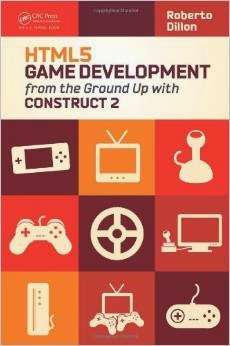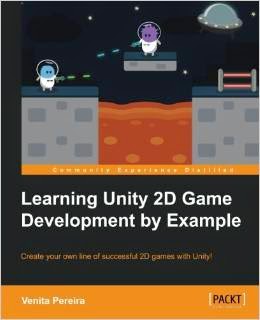.jpg) Unseen London photographed by Peter Dazeley ; text by Mark Daly. 720.9421 DAZ
Unseen London photographed by Peter Dazeley ; text by Mark Daly. 720.9421 DAZPeter Dazeley has gained access to the hidden interiors of some of London's most iconic buildings, from Tower Bridge to Battersea Power Station, Big Ben to the Old Bailey. His photographs of these buildings - some derelict, but many still working - are astonishing. Here is a collection of some 50 extraordinary locations, with a thoughtful text by Mark Daly which tells the story of how each of these places was created, how they are used, and what they reveal about the currents of power flowing through the city. Unseen London takes you backstage at some of the capital's great theatres, into the changing rooms of some of our greatest temples of sport, into the heart of the Establishment, the boiler room of the city's infrastructure and behind the scenes at some of the most opulent buildings in the Square Mile.
Mid-century modern complete
.jpg) by Dominic Bradbury, Richard Powers. 745.2 BRA
by Dominic Bradbury, Richard Powers. 745.2 BRAThis definitive survey of one of the most popular, collectable and dynamic periods of international design offers a rich overview of all aspects of the subject. It covers furniture, lighting, glass, ceramics, textiles, product design, industrial design, graphics and posters, as well as architecture and interior design. Nearly 100 major and influential creators of the mid-century period are highlighted, including icons such as Saul Bass, Robin Day, Charles and Ray Eames, Marimekko, Isamu Noguchi, Dieter Rams, Lucie Rie and Paolo Venini, as well as architects Alvar Aalto, Philip Johnson, Richard Neutra and Oscar Niemeyer. An additional illustrated dictionary features hundreds more key mid-century designers and manufacturers as well as important organizations, schools and movements. Complete with thirteen specially commissioned essays by renowned experts and over 1,000 mainly colour illustrations, it is a must-have acquisition for any design aficionado, collector or reader seeking inspiration for their home.
Thinking visually for illustrators
By Mark Wigan. 741.019 WIG
"Thinking Visually for Illustrators features a wide range of work, demonstrating diverse visual languages, context, ideas, techniques and skills. It also looks at the ways in which illustrators develop their own personal visual language. Contemporary illustrators from all over the world engaged in a diverse range of approaches to the discipline have contributed their artwork and commentaries on visual thinking and the working process. The text also features the work of recent graduates, present students and observations from educators past and present. This edition has been updated to include a new chapter on illustration for the digital context and new approaches to working"
Researching the visual : Demiystifying "The picture that's worth a thousand words"
edited by Arianne Rourke and Vaughan Rees. 302.222
This book discusses from both a practical as well as theoretical perspective many different approaches to researching the visual in higher education, to assist demystifying “the picture that’s worth a thousand words.” It takes a multi-disciplinary approach to using the visual for research and discusses the role technology can play both as the subject of visual research and in the training of the visual researcher. From a variety of different disciplinary focuses, the authors offer the educator, researcher, and tertiary student both their knowledge and practical approach to systematically and creatively deciphering, deconstructing, and reconfiguring the visual form. This book promotes the worthiness of focusing on the visual as the subject of research and scholarship as we move further into the technologically sophisticated world of 21st-century learning.
 The changing face of portrait photography : from daguerreotype to digital
The changing face of portrait photography : from daguerreotype to digital By Shannon Thomas Perich. 778.9209 PER
"A richly illustrated volume examines ten photographers' portrait work and explores the power of the portrait and the role it plays in our personal and national identities. The Changing Face of Portrait Photography explores ten groups of portraits selected from within the Smithsonian National Museum of American History's Photographic History Collection. The selections represent work by specific photographers with diverse relationships to portraiture, and through their sampling take a focused look at changing convention, theory, and technologies".
Ugliness : the non-beautiful in art and theory
Edited by Andrei Pop and Mechtild Widrich. 701.17 POP
.jpg)
Ugliness is very much alive in the history of art. From ritual invocations of mythic monsters to the scare tactics of the early twentieth-century avant-garde, the cabinet of curiosities to the identity politics of today, the ugly has been every bit as active as beauty, and often much more of a reality... why then has it been so neglected. This book seeks to remedy this oversight through both broad theoretical reflection and concrete case studies of ugliness in various historical and cultural contexts. The protagonists range from cooks to psychoanalysts, the object, from war prostheses to plates of asparagus, on a world stage stretching from ancient Athens to Singapore today. Drawing across disciplinary and cultural boundaries, the writers illuminated why ugliness, associated over the millennia with negative categories ranging from sin and stupidity to triviality and boredom, remains central to art and cultural practice.
50 years of illustration
by Lawrence Zeegen, Caroline Roberts. 741.6090145 ZEE
This book charts contemporary illustrations rich history: the rampant idealism of the 1960s, the bleak realism of the 1970s, the over-blown consumerism of the 1980s, the digital explosion of the 1990s, followed by the increasing diversification of illustration in the early twenty-first century. The book explores the contexts in which the discipline has operated and looks historically, sociologically, politically and culturally at the key factors at play across each decade, whilst artworks by key illustrators bring the decade to life. Contemporary illustrations impact and influence on design and popular culture are investigated through introductory essays and profiles of leading practitioners, illustrated with examples of their finest work.

Vivienne Westwood
By Vivienne Westwood with Ian Kelly. 391 WES
Vivienne Westwood is one of the icons of our age. Fashion designer, activist, co-creator of punk, global brand and grandmother; a true living legend. Her career has successfully spanned five decades and her work has influenced millions of people across the world. For the first and only time, Vivienne Westwood has written a personal memoir, collaborating with award-winning biographer Ian Kelly, to describe the events, people and ideas that have shaped her extraordinary life. Told in all its glamour and glory, and with her unique voice, unexpected perspective and passionate honesty, this is her story.

Love objects : emotion, design, and material culture
Edited by Anna Moran and Sorcha O'Brien. 704.9491524 MOR
How are love and emotion embodied in material form? Love Objects explores the emotional potency of things, addressing how objects can function as fetishes, symbols and representations, active participants in and mediators of our relationships, as well as tokens of affection, symbols of virility, triggers of nostalgia, replacements for lost loved ones, and symbols of lost places and times. Addressing both designed 'things with attitude' and the 'wild things' of material culture, Love Objects explores a wide range of objects, from 19th-century American portraits displaying men's passionate friendships to the devotional and political meanings of religious statues in 1920s Ireland.
Iconic designs : 50 stories about 50 things
 Iconic Designs is a beautifully designed and illustrated guide to fifty classic 'things' - designs that we find in the city, in our homes and offices, on page and screen, and in our everyday lives. In her introduction, Grace Lees-Maffei explores the idea of iconicity and what makes a design 'iconic', and fifty essays by leading design and cultural critics address the development of each iconic 'thing', its innovative and unique qualities, and its journey to classic status. Subjects range from the late 19th century to the present day, and include the Sydney Opera House, the Post-It Note, Coco Chanel's classic suit, the Sony WalkmanT, Hello KittyT, Helvetica, the Ford Model T, Harry Beck's diagrammatic map of the London Underground and the Apple iMac G3. This handsome volume provides a treasure trove of 'stories' that will shed new light on the iconic designs that we use without thinking, aspire to possess, love or hate (or love to hate) and which form part of the fabric of our everyday lives
Iconic Designs is a beautifully designed and illustrated guide to fifty classic 'things' - designs that we find in the city, in our homes and offices, on page and screen, and in our everyday lives. In her introduction, Grace Lees-Maffei explores the idea of iconicity and what makes a design 'iconic', and fifty essays by leading design and cultural critics address the development of each iconic 'thing', its innovative and unique qualities, and its journey to classic status. Subjects range from the late 19th century to the present day, and include the Sydney Opera House, the Post-It Note, Coco Chanel's classic suit, the Sony WalkmanT, Hello KittyT, Helvetica, the Ford Model T, Harry Beck's diagrammatic map of the London Underground and the Apple iMac G3. This handsome volume provides a treasure trove of 'stories' that will shed new light on the iconic designs that we use without thinking, aspire to possess, love or hate (or love to hate) and which form part of the fabric of our everyday lives
.jpg)

































